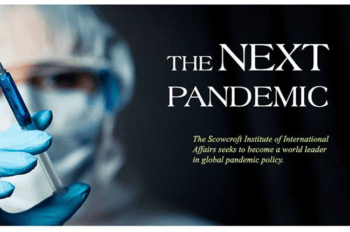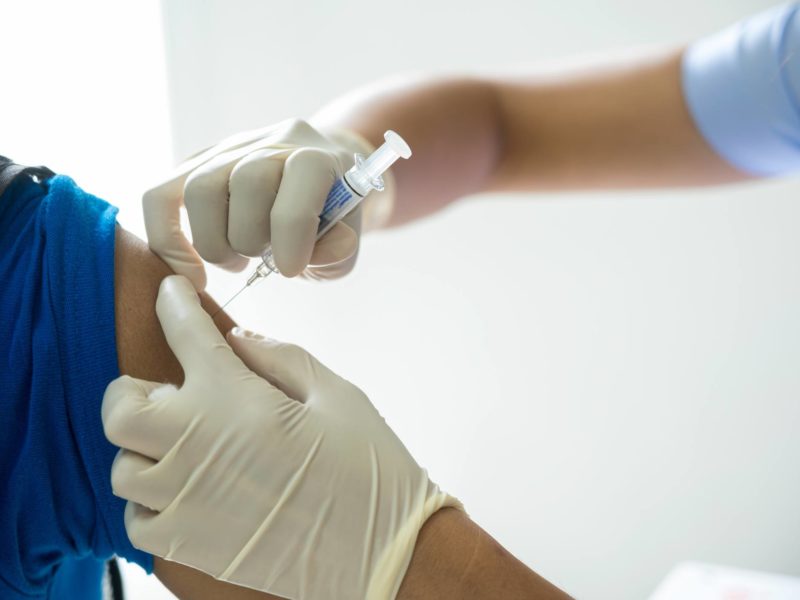The Next Pandemic
 Right now, in a small corner of Texas A&M University, people are preparing for one of the greatest catastrophes ever to face human civilization. No, there’s not a den of superheroes on campus. The Global Pandemic Policy Program, which goes by the catchy, James-Bond-like acronym GP3, is gearing up for preventing disease outbreak on a global scale. The program was launched by the Scowcroft Institute of International Affairs with a conference held Sept. 15-17 that brought together top minds in the fields of public health, medicine, homeland security, veterinarian medicine, engineering, agriculture, economics, psychology, government and international diplomacy.
Right now, in a small corner of Texas A&M University, people are preparing for one of the greatest catastrophes ever to face human civilization. No, there’s not a den of superheroes on campus. The Global Pandemic Policy Program, which goes by the catchy, James-Bond-like acronym GP3, is gearing up for preventing disease outbreak on a global scale. The program was launched by the Scowcroft Institute of International Affairs with a conference held Sept. 15-17 that brought together top minds in the fields of public health, medicine, homeland security, veterinarian medicine, engineering, agriculture, economics, psychology, government and international diplomacy.
Topics discussed included:
- A report on the World Health Organization’s mishandling of the Ebola crisis last year and its inability to deal with similar epidemics in the future.
- The slaughter of millions of chickens in the Midwest to combat a new strain of avian flu and the risks of the disease jumping to humans.
- The spread of Middle East Respiratory Syndrome (MERS) to South Korea.
- Disease-spreading simulations by the Bill and Melinda Gates Foundation that show how a highly infectious, lethal flu could kill up to 33 million people around the world in 250 days.
Based on papers presented at the three-day conference, the GP3 is preparing a set of major policy recommendations directed at governments and health organizations worldwide, including a plan for reforming pandemic surveillance and response systems.
A Hotbed of Pandemic Experts
The conventional wisdom is that it’s not a matter of “if” a virulent pandemic is going to break out, but a matter of “when.” According to these experts, the world is woefully ill-prepared. The 7-year-old Scowcroft Institute, the international research arm of The Bush School of Government and Public Service, considers the GP3 its signature initiative, with the goal of becoming one of the leading centers for developing strategies to meet the threat. (This is only one of the Scowcroft Institute’s programs; see the sidebar for others.) It turns out that Texas A&M is the ideal place for such a program, since it has a unique combination of expertise and policy research to make effective recommendations on national and international levels.
“I don’t think there’s any other university in the country that has all of the facilities necessary to develop solid policy,” said Andrew Natsios, director of the Scowcroft Institute. “We have world-class programs in veterinary medicine, agriculture, engineering and the health sciences.” Experts in these disciplines already have experience working together through the Texas A&M “One Health” initiative, a multidisciplinary program to promote sustainable health for the ecosystem. “We have a vaccine manufacturing center that can make 50 million vaccines in four months, one of only three in the United States,” Natsios continued. “We have experts in legal, economic and psychological aspects of a pandemic. If we have a worldwide pandemic, College Station is the place you want to be.”
Natsios’ background makes him uniquely qualified to lead the effort. A retired lieutenant colonel in the U.S. Army Reserves and former state legislator, his first job in the federal government was as director of the Office of Foreign Disaster Assistance for President George H.W. Bush. He went on to lead the U.S. Agency for International Development for five years, managing relief, health, development and reconstruction programs throughout the world. Don Bailey ’78 ’80, the institute’s assistant director, adds more experience as a retired Army colonel and former head of biosecurity at the Pentagon.
The GP3’s goal of preparing for a pandemic fits into the Scowcroft Institute’s mission, because any approach to a pandemic must be global. Experts agree that most pandemics arise in developing countries, which have weaker health care systems. “The best way to prevent a pandemic in the U.S. is to stop it overseas. The first line of defense should be in the developing world,” said Natsios. “You cannot build a wall around the U.S. The disease doesn’t stop at the borders, as we found out during the Ebola scare. We also know that if the pandemic is airborne, it will spread through airports.”
Jay Maddock, dean of the School of Public Health, said that if the GP3 had been up and running before the Ebola outbreak last year, it may not have spread to Texas. “It more likely would have been contained in the early days in Africa,” he said. The problem, many experts note, is that much of the international Ebola response was on the fly. “That’s what we’re trying to avoid,” Maddock continued. “The key is to take the expertise of the Scowcroft Institute and everyone at Texas A&M and bring the best minds in the world together when we’re not in a pandemic situation.”
For more on this story, go to Spirit online.
This article by Jeannie Ralston originally appeared in Texas A&M Foundation Spirit Magazine.





